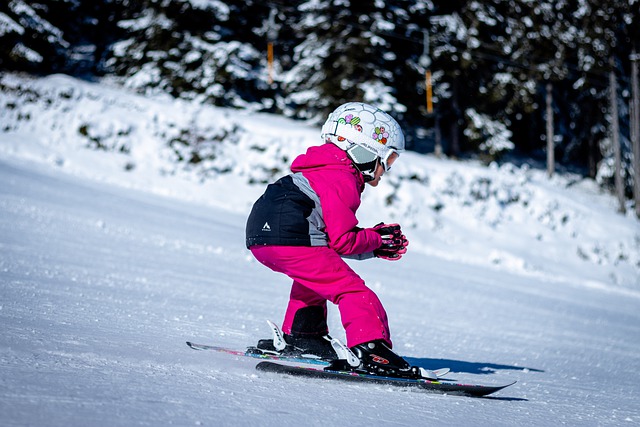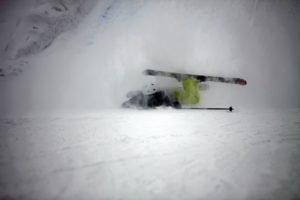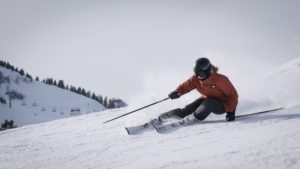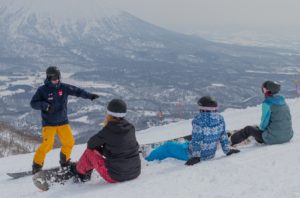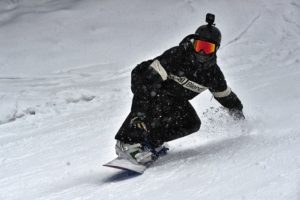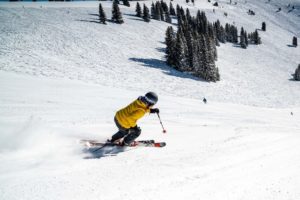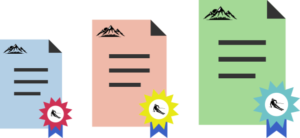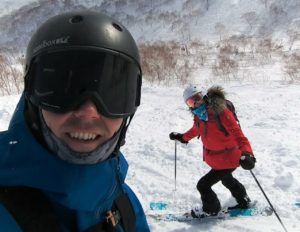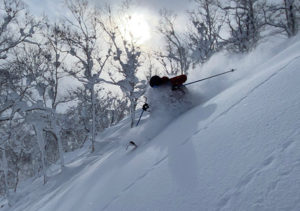There are plenty of skiing myths out there. We usually think of recreational skiers believing myths such as, “you should ski with your feet close together” or “your hips should swish side to side to turn”. However, new ski instructors are just as susceptible to believing other skiing myths.
Each of these skiing myths have an element of truth in them. But, out of context, they simply aren’t accurate.
1. You Must Lean Forward When Skiing

Lean forward, feel your shins, bring your shoulders over your toes. These phrases, or ones very similar, are said everyday in ski schools around the world, by new and very experienced instructors alike. So what’s the issue?
Skiing is a dynamic sport, we simply don’t stand in one position all the time. Great skiers will feel the front, middle and back of the ski boot depending on what they’re doing, which part of the turn they’re in and what the snow is like. You really shouldn’t feel your shins pressing into the boots 100% of the time. Being more centred and also able to move forward and back gives you the best balance while dealing with the ever changing terrain under your feet.
The reason why this skiing myth catches out both recreational skiers and new instructors alike, is that most beginner skiers naturally lean back. This puts a lot of strain on the quads and makes turning difficult. So of course we want these skiers to move their weight forward to hopefully find the middle of their boots. It’s easy to get caught up in this and convince yourself that you must always be leaning forward when skiing. What we’re really trying to achieve here is to get someone out of the backseat and into the middle when skiing.
How to Become a Ski Instructor
2. There Is Only One Way to Learn To Ski
Many new ski instructors can find themselves guilty of believing this skiing myth. To be a ski instructor, you’ll be trained on how to teach people, what steps and progressions to go through to get someone enjoying the snow. To learn to ski, you first need to learn how to put your skis on, slide on the flat, how to stop and then to turn, right? Well, not exactly.
For most people this will be true, but everyone learns in different ways. Sure, we want to teach people safely and give them a good lesson. But, experienced instructors know that you can adapt any lesson to suit different guests.
You might have a beginner skier struggling to create a triangle big enough to stop (snowplough/wedge). Do they need to spend the rest of the lesson doing the same thing before they can move on? Not necessarily. Introducing the next step of a gentle turn could give them a better sense of how their edges work, and assist with speed control as they travel across the hill instead of straight down it.
This skiing myth is linked closely with our next myth.
How to Pass a Ski (or Snowboard) Instructor Exam
3. Good Skiing Always Looks The Same

One of the skiing myths that both skiers and instructors are guilty of holding onto. Every skier has that picture in their mind of the perfect skier, effortlessly gliding down a double black diamond with perfect technique. But the truth is that humans come in all shapes and sizes, so to expect everyone to ski and look the same doing so just doesn’t actually make sense.
As ski instructors, we are trained to analyse skiers to see where they can improve. This involves watching a skier’s body movements and what their skis are doing. It can be really easy to focus on the body and not the skis. This can lead to getting too concerned with how the skier looks and not what they are actually achieving, (or not achieving).
A simple example is where your hands should be when skiing. The general rule is in front of your body and just above your hips. Why do we say this as ski instructors? Most people will lean back if they drop their hands, keeping them forward can help skiers in this case. But, if a skier is perfectly capable of skiing well with their hands in a different place, that’s totally fine too.
A Day in the Life of a Ski Instructor
4. We Should Stop People from Turning Their Shoulders
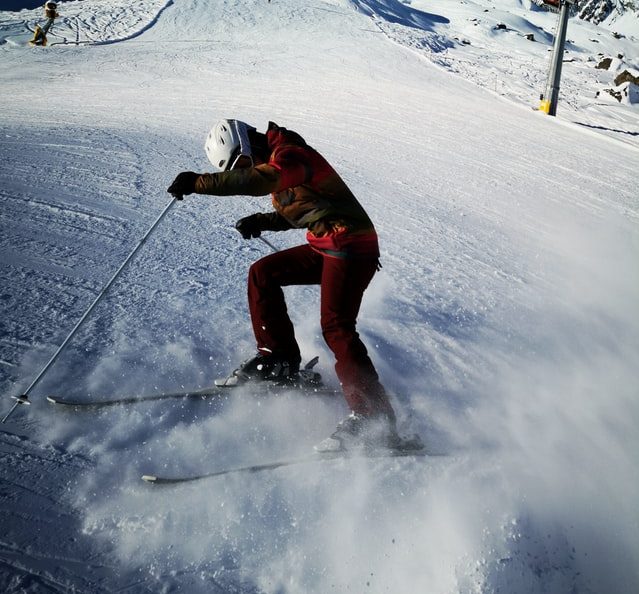
But, turning your shoulders is bad in skiing right?! It’s certainly a bad technique to use your shoulders to turn your skis, and for multiple reasons. Bad for your spine (twisting), it takes longer to turn, your legs are stronger than your shoulders…
If you see someone forcing their turns and swinging their upper body, your first thought might be to stop them doing just that. But that wouldn’t be the best plan.
The key question here is, why? Why is the skier using their upper body and not their legs to turn. The answer, almost always, is that’s the only way the skier can turn left and right. Tell them to stop and now they have no ability to turn their skis at all. Well, not exactly, but they’ll find some other random movement to survive skiing down a hill. And it’s not going to feel good. This results in the skier possibly getting frustrated and having less control.
Fix the problem, not the result. The problem for the skier, is a lack of leg steering. If we focus on that, they will gain stronger turns, more control and be less tired. If they are starting to get it, we can then introduce limiting the upper body from turning.
5. Kids Look like Little Versions of Adults When They Ski
All new ski instructors will be aware that kids learn differently to adults. But, it can be very easy to think that kids will ski just like little versions of adults. At first they look the same, skiing down a hill with their skis in a triangle. Maybe even pizza and French frying their way around the kids area. But there’s a couple of big differences between kids and adults, head to body ratio and leg strength.
A lot of kids ski by leaning back a little and with straighter legs. If you’re a skiing purist then this is one of the worst things you could do on snow. But for kids, it’s totally OK for them to ski like this, at least for a little while. Children’s bodies are very different. Their heads are bigger in relation to their body, so they may need a wider stance to balance. Their legs aren’t as strong so they use their skeleton more than their muscles.
New ski instructors may spend too much time worrying that the kids they’re teaching don’t have the right technique. But in reality, we just have to adapt to what the skier is able to do, and work with that.
Top 5 Qualities of a Great Ski Instructor
Like any industry, experience takes you beyond your training. As a new ski instructor, it can be easy to fall into the traps of believing, or partially believing the skiing myths above. Believing these skiing myths isn’t the worst thing in snowsports, but they limit true understanding of skiing and instructing. The best instructors in the world are the ones who continually check their knowledge and consider the deeper reasons behind things.

